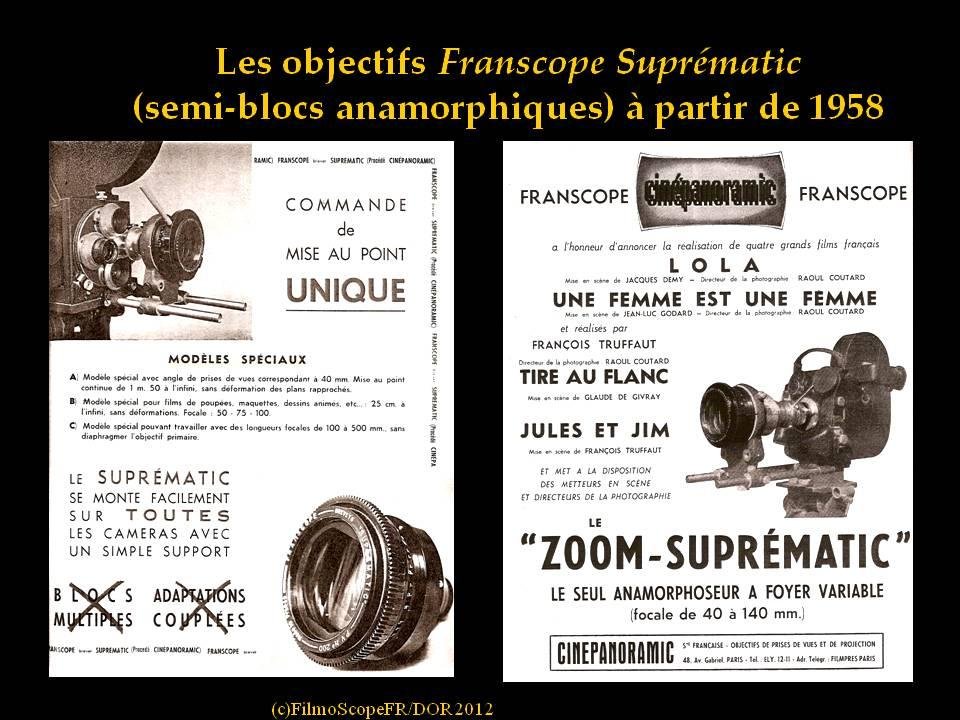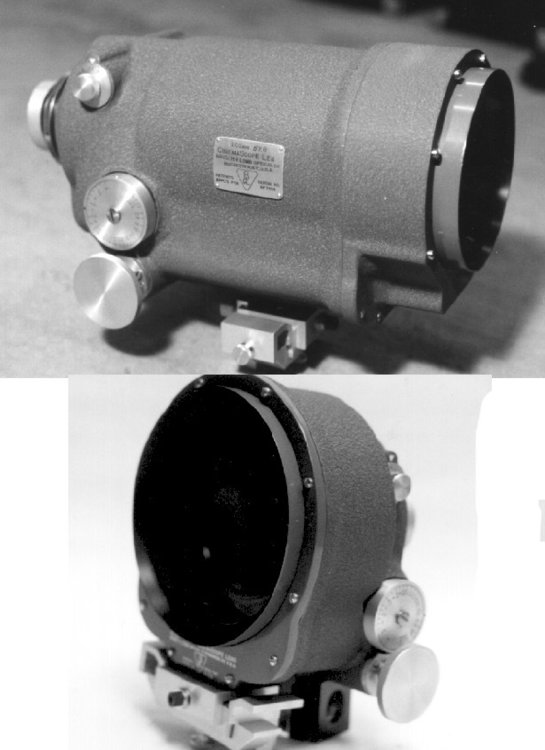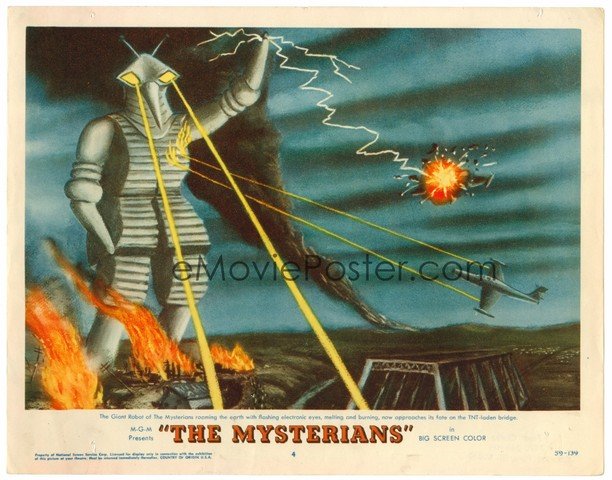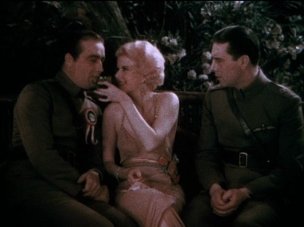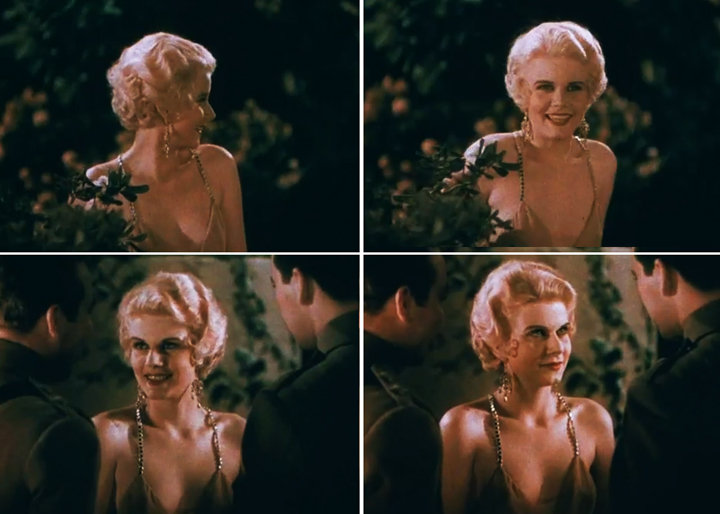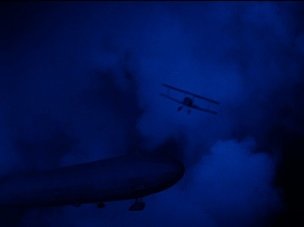-
Posts
2,009 -
Joined
-
Last visited
Everything posted by Leo Anthony Vale
-

The Omen (1976), filmstock(s) used?
Leo Anthony Vale replied to Mikael Kristenson's topic in Film Stocks & Processing
When I was at Sawyer Camera in '79, I would check the Kodak pricelist and 5254 was only stock availiable in 65mm. Also that was when the Hunt brothers were trying to corner the silver market, the price of film stocks doubled in a few months. -

1960s dailies - what would they have seen..?
Leo Anthony Vale replied to Karel Bata's topic in General Discussion
On the Criterion disc of 'Contempt', Raoul Coutard, in the extras, mentioned that due to some agreement between European labs, technicolor roma printed the dailies on Ferrenia color stock. They got so used to the less muted colors that were surprised at how saturated the Eastman color answer print was. -
No. You control the colors by putting color filters on the camera lens.
-

Cinematographer Style
Leo Anthony Vale replied to Bill DiPietra's topic in On Screen / Reviews & Observations
Trailers are not copyrightable. Which is why so many cable documentaries use clips from trailers. Of course, the picture quality is usually abominable. -
1965. I saw a double bill of 'The Loved One' and 'Dr. Strangelove'. I wound up spending the whole day there, probably watched them three times. Though that was already one of my habits by then. How I miss double bills and continuos showings. Those two pictures made me fall in love with B/W.
-

Day For Night shoot
Leo Anthony Vale replied to Yasutake Torii's topic in Visual Effects Cinematography
You could always have cutaways to a full moon. -
Dyes fade. The B/W seperations do not.
-

Why is this done?
Leo Anthony Vale replied to Tim O'Connor's topic in On Screen / Reviews & Observations
Well, we do have televised poker tournoments. -
Fielding's 'The Technique of Special Effects Cinematography' is a very good source. Unfortunetly, the prices for used copies on Amazon indicate the demand for this classic. http://www.amazon.com/Techniques-Special-Effects-Cinematography-Communication/dp/0240512340/ref=sr_1_1?ie=UTF8&qid=1333696435&sr=8-1
-
French comedies, particularly ones filmed out side of france are things to be avoided. You're better offwatching a franco and ciccio movie (italy). The french worship Jerry Lewis as the god of comedy because their comedies are so inferior to his.
-
Poland had to wait ten years after the collapse of the Soviet Union to make this one. Directed by Jerzy Hoffman (With Fire and Sword & Potop-The Deluge). Photographed by Slawomir Idziak. http://en.wikipedia.org/wiki/Battle_of_Warsaw_1920 http://www.imdb.com/title/tt1783244/combined This contains three trailers: http://www.filmpolski.pl/fp/index.php/1226037 Lenin and Stalin vs Pilsudski with Ch.deGaulle lurking about. & those cavalry charges! ---LV
-

How Do Anamorphic Lenses Work?
Leo Anthony Vale replied to Derek Stettler's topic in Lenses & Lens Accessories
amended 03-24-12 Astigmatism is a lens aberation, thus something to be corrected. But cylinder lenses are astigmatic. http://en.wikipedia.org/wiki/Astigmatism An anamorphic system has two focal lengths, else no squeeze. The system is basicaly two parts, the anamorphic section and the spherical backing lens. Both sections have to be focused. When both are set at infinity, there is no astigmatism in the image. If the backing lens is focused without focusing the anamorph, astigmatism shows up in the image. When focused at inf, the anamorph is afocal' In a standard anamorphic sysym, The spherical lens focuses in the vertical axis and the anamorph There are three main ways of focusing the system. The earliest systems focused by moving the neg and pos cylinders closer and focusing the spherical normaly. As the neg and pos elements get closer together the squeeze ratio lessens, resulting in the infamous anamorphic mumps . The first systems used anamorphic attachment mounted infront of the main lens. Both lenses had to be focused seperately. Makes for tricky follow focus. Later later, single units with the focus for both sections interlocked. B&L C'Scopes were most probably the first. B&L CinemaScope The second type is Panavision's 'variable astigmatiser'. The anamorph remains set at inf, which eliminates the mumps; while the variable astigmatiser adjusts the astigmatism in the image. Here's the patent, figure it out: http://www.google.com/patents?id=B6gBAAAAEBAJ&printsec=frontcover&dq=wallin&hl=en&sa=X&ei=tKhqT8yDC9Dptges36GaBg&ved=0CD0Q6AEwAw The next is used by most nonPanavision anamorphots today. The cylinder and spherical sections are permanently set at infinity. A spherical colliminating section is added to the front of the system. Light rays from less than inf go in an come out parallel, i.e. 'focused at inf.'. In effect, a variable close up dioptre! Normally one would be using lenses that all have the same squeeze, so it's a moot point. Also one doesn't have to use a squeeze element in the viewfinder. One can get used to viewing a squeezed image and it'sharper. Panavision and Bausch&Lomb CinemaScope have blue horizontal flares. TohoScope usually had red flares, which were smaller than Panavision and C'Scope flares. HammerScope also had smaller and dimmer flares. I,ve seen red flares on other foreign sytems. Perhaps this post has left you even more confused. If so... I,m tired myself. in HAMMERSCOPE and in TOHOSCOPE, ---LV APPENDIX -

Why is this done?
Leo Anthony Vale replied to Tim O'Connor's topic in On Screen / Reviews & Observations
Au contraire! Far worse is that there's no alternative to sports there. No news, no Jeopardy or Wheel..., not even the Travel Channel! Back in the glory days of the Soviet Union, Cspan would carry the Moscow Evening News. First item in the sports section was Chess!!! When are we going to see that in a ******* American sports bar? -
Here's an extensive one on matte paintings and some miniatures: http://nzpetesmatteshot.blogspot.com/
-

Nikkor lens adaptor for Canon
Leo Anthony Vale replied to Pierre P Blais's topic in Lenses & Lens Accessories
Why not? http://www.bhphotovideo.com/c/search?atclk=Lens+Fitting+%28Female%29_Nikon&ci=3420&N=4277997813+4289371108+4289371044 from wikipedia: The Nikon F-mount is one of only two SLR lens mounts (the other being the Pentax K-mount) which were not abandoned by their associated manufacturer upon the introduction of autofocus, but rather extended to meet new requirements related to metering, autofocus, and aperture control. The large variety of F-mount compatible lenses makes it the largest system of interchangeable flange-mount photographic lenses in history. Over 400 different Nikkor lenses are compatible with the system. The F-mount is also popular in scientific and industrial applications, most notably machine vision. -

CGI verse models
Leo Anthony Vale replied to George Ebersole's topic in Visual Effects Cinematography
That was most likely done by Howard Lydecker. Before going to Fox, he and his brother spent years running the effects department at Republic. http://nzpetesmatteshot.blogspot.com/search/label/Theodore%20Lydecker http://nzpetesmatteshot.blogspot.com/search/label/Howard%20Lydecker -
'Chinatown' mostly used a 40mm anamorphic. Alonzo and Polanski considered the equivalent of a 25mm in 1.85/1. This is based on the height rather than the width. They considered these lenses the closest to human vision, which of course so few agree upon. this was from a talk by Alonzo after an AFI screening of 'Chinatown'. Most of 'Excalibur' was shot on the 20mm end of a Cooke zoom in 1.66/1. David had mentioned that a 35mm lens was the one used most often in '2001'. Heightwise, that would be equivalent to an 18mm in 1.85/1. the 19mm fish eye would be equivalent to a 10mm.
-

Can someone re fresh my memory
Leo Anthony Vale replied to John Rizzo's topic in Film Stocks & Processing
4XN rerplaced Tri-X. XTN replaced BackGround-X. -
'The Hill' Sidney Lumet/ Ossie Morris 'Cranes are Flying'
-
Kubrick shooting with the hand held 65mm camera can be seen reflected in an astonaut's helmet in the close shot after they've gotten off the ramp. He also shot flying bone with the hand held camera. Two of the few actual exterior shots.
-

CGI verse models
Leo Anthony Vale replied to George Ebersole's topic in Visual Effects Cinematography
Posted 15 December 2011 - 09:12 PM K Borowski, on 15 December 2011 - 06:55 PM, said: I'd say, since the only movie that got space almost 100% right was "2001" In the documentary 'For All Mankind', one of the Apollo astronauts says traveling in space is just like '2001'. there's also a shot wherein an Apollo astronaut spins a small dark rectangular cassette player which is playing the intrduction to 'Also Sprach Zarathustra' toward the camera. yinz should go to yuuTube and watch the rest of 'Waterloo' & try to find, at least the battle scenes to <<voina i Mir>>/'War and Peace'. WAR AND PEACE -
'Wings' wasn't the Howard Hughes film. 'Hell's Angel's' was. It started out as a silent, then switched to sound. So most of the dialogue scenes were were reshot by James Whale. The zeppelin scene was post synced. The scene was quite spectacular. There's also a 2-color Technicolor scene at fancy party. The 1930 Slim Summerville (who was in 'All Quiet... the same year) two reeler 'We! We! Marie!' was a trench warfare comedy, the second reel of which was in wide screen. Or perhaps two versions were shot and only one version of each survived. I set it up for printing at WRS. The wide screen system was masking the picture to Techniscope size in the camera. & speaking of wide screen, 'The Blue Max' was actually shot in Franscope, but Fox was rather fond of their trade name CinemaScope. D.Slocombe also shot 'Fathom' in Franscope afterwards. My favorite WWI trench warfare comedy is the series 'Blackadder goes Fourth'
-

Directors shooting their own films
Leo Anthony Vale replied to Lee Tamer's topic in Cinematographers
In the mid50s, Jack Marquette ASC produced some very low budget movies, including 'The Brain from Planet Arous', so he could hire himself as cinematographer and get credits for joining the union. So there's yet another way to get your union card.



